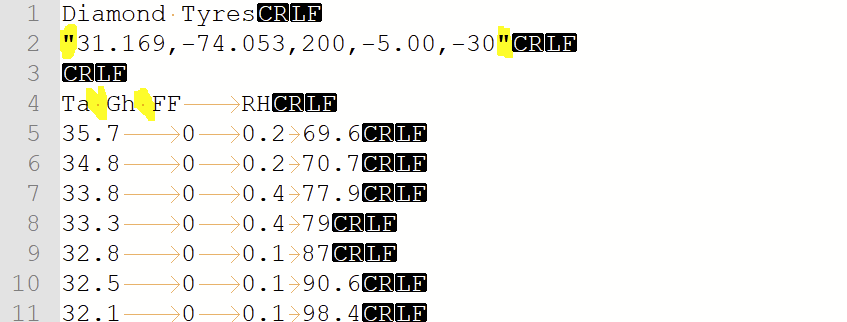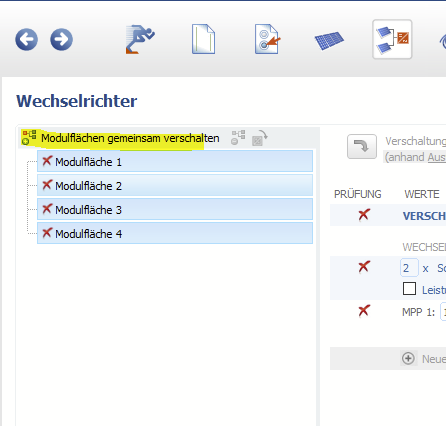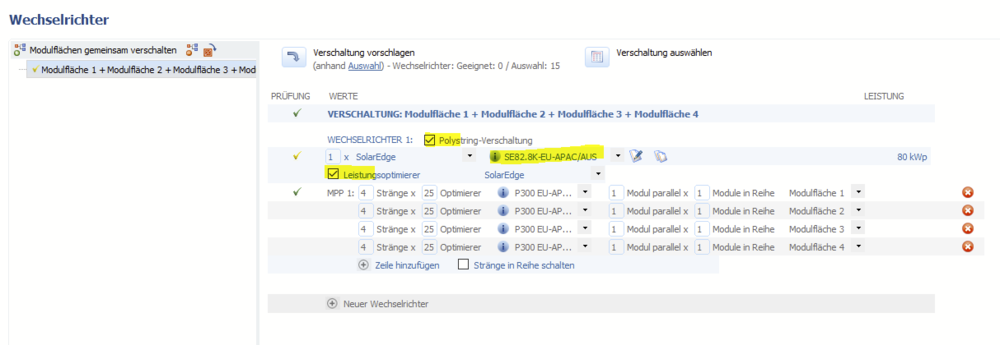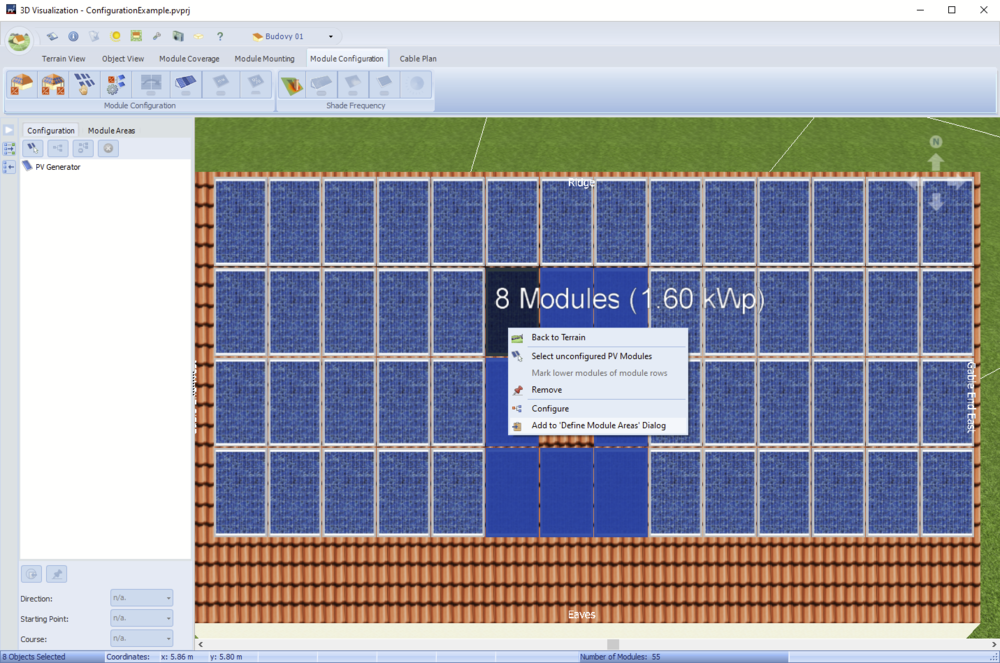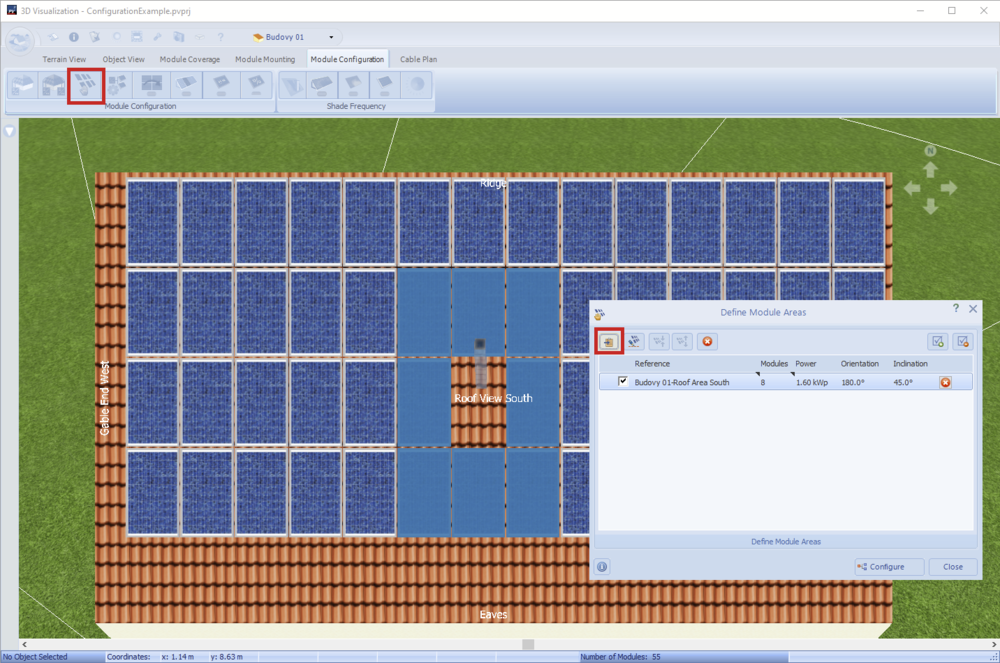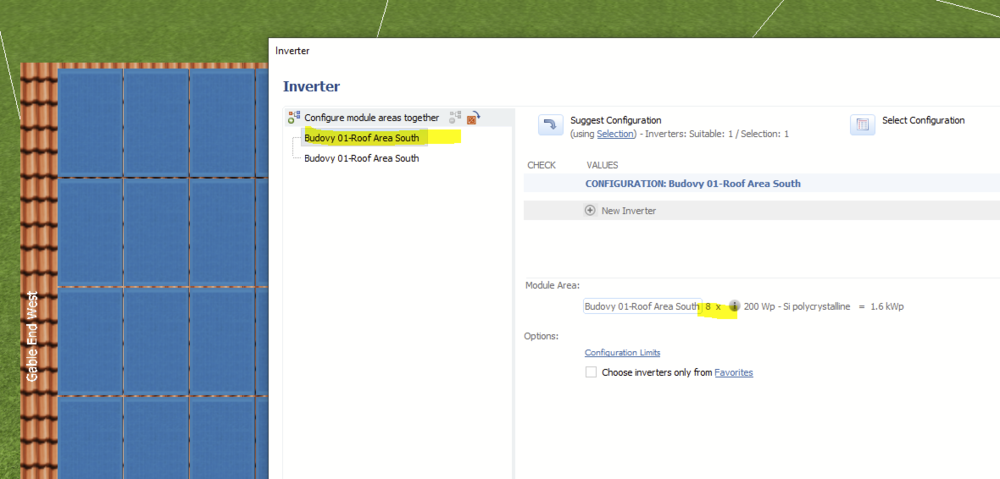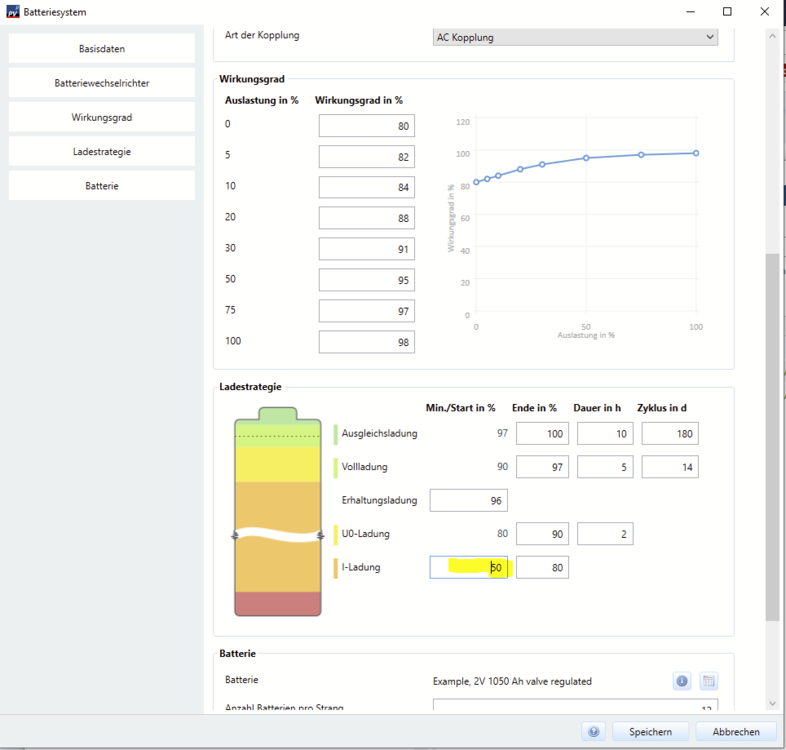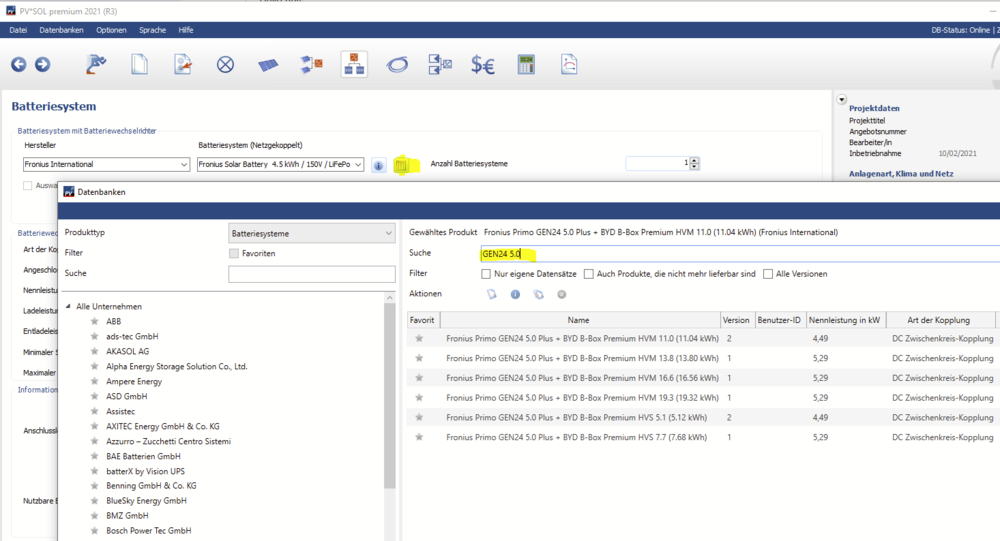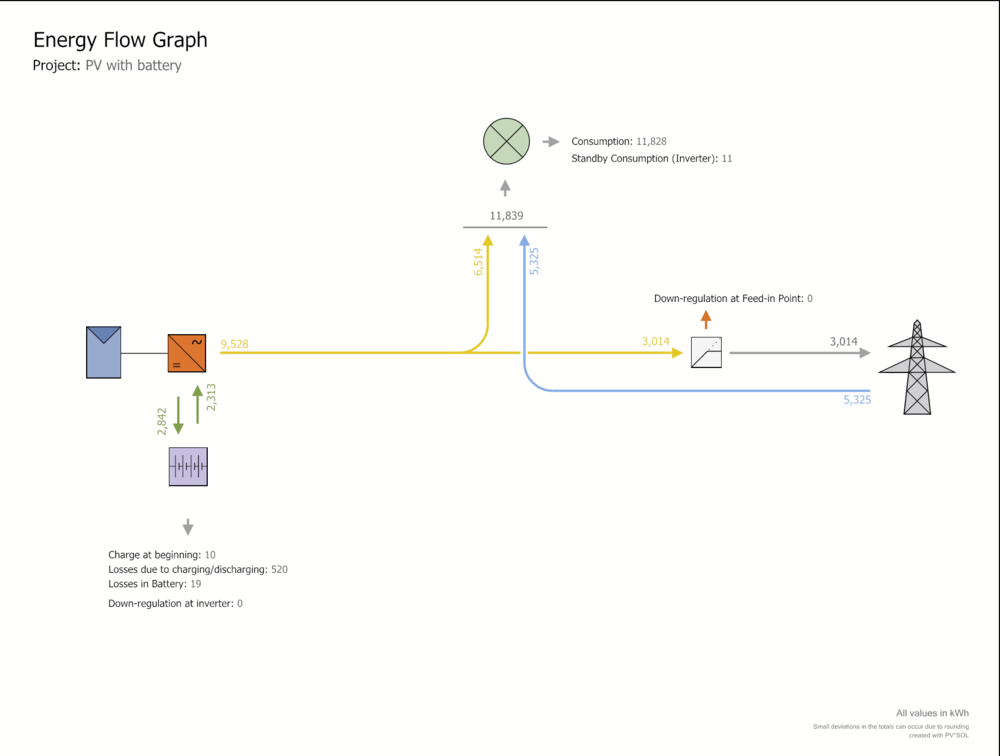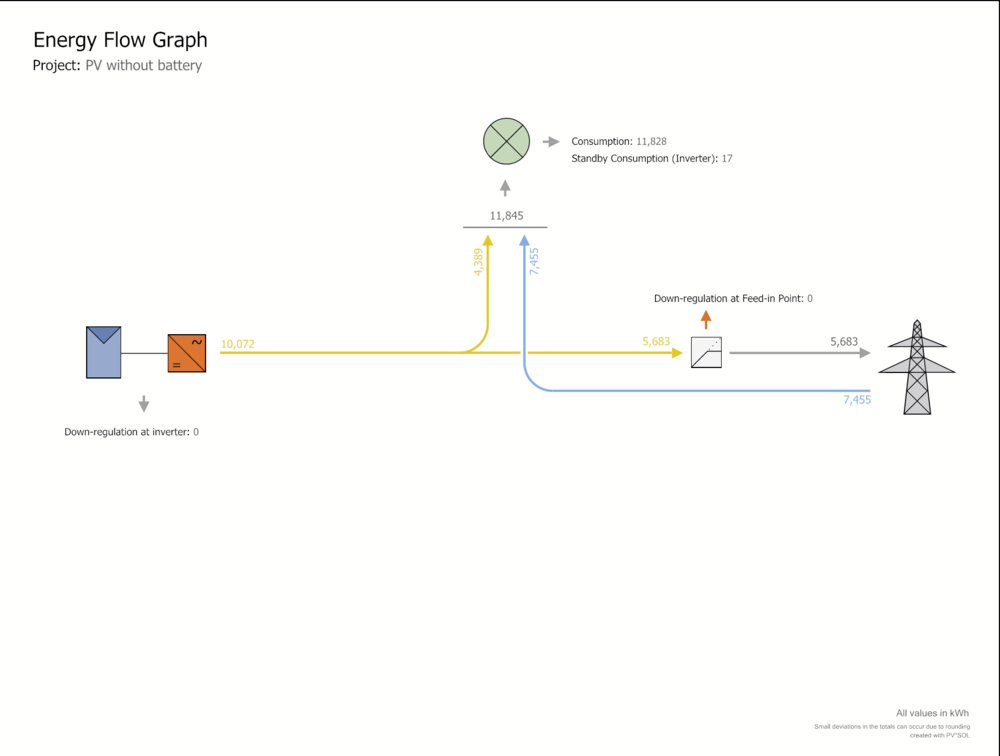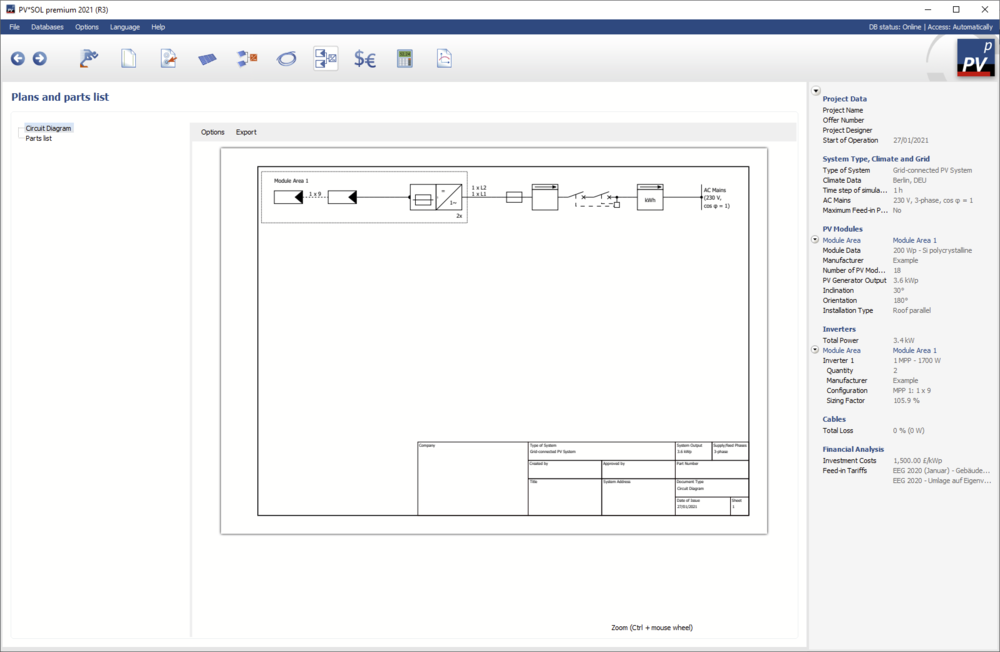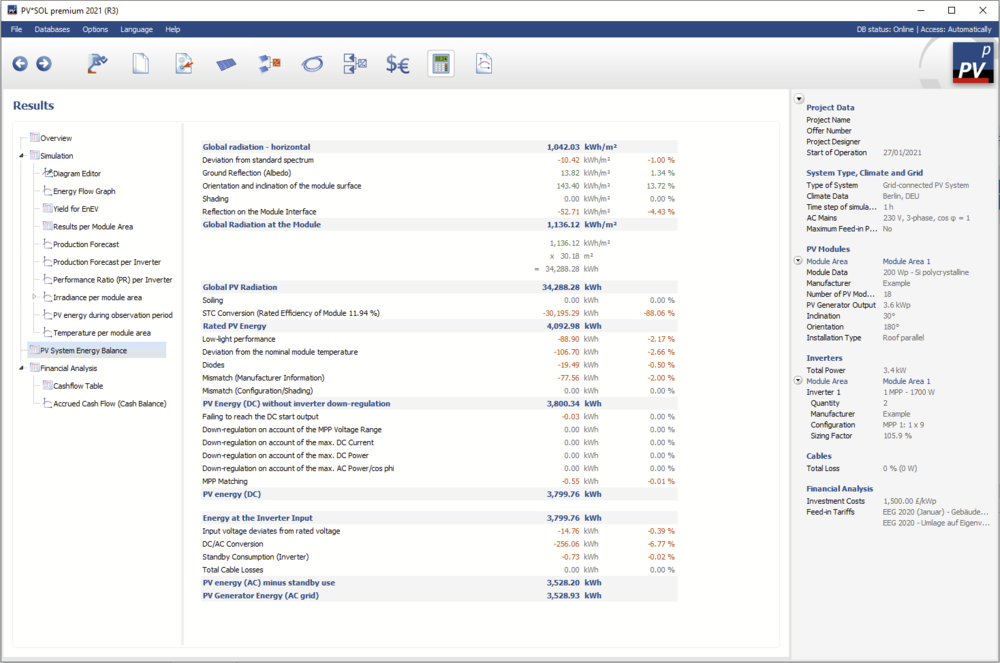-
Posts
1,855 -
Joined
-
Last visited
-
Days Won
173
Everything posted by developer_mh
-
Hallo again, here the header seems to be the problem: Remove the " from the second line Replace the space between Ta and Gh and Gh and FF with a tab (\t) Kind regards, Martin
-
Hello Nasr, there are values missing at the end of the file. You should provide 8760 rows with values, one row for each hour of the year. So, including the header, the last line number of the file should be 8764. Kind regards, Martin
-

How to rotate a PV module relative to the location of a building?
developer_mh replied to Mikael-Nyman's topic in PV*SOL
Hi Mikael, it is not necessary, no. But it is easier in my opinion, since you have this automatic alignment of modules, you can place restricted areas or other objects on top, etc. Kind regards, Martin -

How to rotate a PV module relative to the location of a building?
developer_mh replied to Mikael-Nyman's topic in PV*SOL
Hi Mikael, when you place modules onto buildings, they get automatically oriented in line with the building geometry: I guess you did not extrude the building from the map? Try drawing a polygon onto the map, make it rectangular (if you want), then extrude the building, activate it, and then place the mounting system. Hope that helps, kind regards, Martin -
Hallo Jörg, für SolarEdge gibt es in PV*SOL (noch) keine automatische Verschaltung, da sie grundlegend anders funktioniert als eine Verschaltung mit herkömmlichen Wechselrichtern. Man kann sie aber auch manuell verschalten. Dazu die vier Modulflächen markieren und "gemeinsam verschalten" klicken Dann aus der Liste der Wechselrichter-Hersteller SolarEdge wählen und im Anschluss rechts nebendran den SE82.8K. Dann die Option "Polystring" und "Power-Optimizer" wählen, und z.B. so eine Verschaltung hier einstellen: Ob eine SolarEdge-Verschaltung valide ist, zeigen die Meldungen im unteren Bereich des Programms und die grünen Haken (bzw. roten Kreuze) neben der Verschaltung an. Ich hoffe, das hilft weiter. Viele Grüße, Martin
-

Base de donné PV sol Solar Carport & virtual storage
developer_mh replied to Photovoltaique83's topic in PV*SOL
Hello photovoltaique83, I am afraid I can't gice you an update for the implementation of virtual storage in PV*SOL. We have it on our list, and we are evaluating the different kinds of virtual storage tariffs in various PV markets, but I am not able to give you a schedule right now. Kind regards, Martin -
Hallo Lis, ja, das geht. Auf der Seite "Anlagenart, Klima und Netz", im Abschnitt Netz lässt sich die Einspeiseabregelung einstellen. Beste Grüße, Martin
-

Half Hourly Data load profile showing half of total consumption
developer_mh replied to Ryan PSE's topic in PV*SOL
Hello Ryan, sorry for the late answer, and thanks for the csv file. As James correctly pointed out, you'll have to set the "Units" to kWh (or Wh - depending on the data you have) and the "Number format" to "####.##" (i.e. a point and no comma), otherwise you will get incorrect values. It should also be noted that you are trying to import a leap year. We filter out the leap day, which is why the year's total is a little lower than the total in your Excel file. Hope that helps, kind regards, Martin -

Hourly values for different orientations (azimuth): weird results
developer_mh replied to BasBemelmans's topic in PV*SOL
Hi Bas, in order to be able to identify what is going on it would be helpful if you could provide the project file. You can send it by private message to me here in the forum. The instantaneous output of PV systems with varying orientation is depending strongly on the diffuse fraction of the solar irradiance and the sun position. The diffuse fraction changes from time step to time step, so does the distribution of the diffuse irradiance over the sky dome. And of course, if there is direct irradiance, it gets more complicated. So without these data it is impossible to understand why a given PV systems performs differently than another at a given point in time. Kind regards, Martin -

Dimensionierung der Batteriespeicher von Offgrid-Systemen
developer_mh replied to Cons's topic in PV*SOL
Hallo Cons, mit welcher Version von PV*SOL arbeitest du denn? Die Empfehlung von 4.8kWh Batteriekapazität pro kWp PV-Leistung erscheint seit einiger Zeit nur mehr als Hinweis, nicht als Fehler. Simulieren geht trotzdem. Beste Grüße, Martin -
Hi Infinitech, thanks for reporting this, I will forward it to our database team (database@valentin-software.com). If you want, you can also report to them directly in the future. Kind regards, Martin
-
Hallo Lis, die Wärmepumpenprofile wurden mit GeoT*SOL https://valentin-software.com/en/products/geotsol/ simuliert. Es handelt sich dabei mehr oder weniger um Beispielprofile, da es nicht möglich ist, einen bestimmten Anwendungsfall festzulegen. In PV*SOL ab Version 2021 kann man aber auch eine Luftwärmepumpe im neuen Anlagentyp Thermische Anlage simulieren. Dabei werden die Klimadaten des aktuellen Standorts verwendet. Das Lastprofil "Wohnkomplex" geht auf eine Forschungsarbeit aus der Schweiz zurück ("Warmwasserversorgungen heute; AT Verlag Aarau (Schweiz) 1984"). Von der Verwendung in wissenschaftlichen Arbeiten würden wir von diesem Profil abraten und eher auf die Lastprofile im oberen Bereich (aus Messwerten) verweisen. Beste Grüße, Martin
-

2.5 mw System Crashing When Finishing Calculation
developer_mh replied to Ryan PSE's topic in PV*SOL
Hi Ryan, it is hard to say what makes your system crash with a 2 MW system if the 3 MW was no problem. Could you provide the project file, please? You can send it here via private message in the forum. Kind regards, Martin -
Hello J. Holovsky, the approach that you followed is the right one to achieve the result that you intend. What do you mean by "PV*SOL is not respecting the arrays"? Here is a quick how to. Let's say you have a module area and a chimney in the middle. You want to connect the 8 modules around the chimney to a different inverter than the other modules. Go to the tab "Module configuration" Select the 8 modules with the mouse Right click on "Add to 'Define Module Areas' Dialog" Go to "Define Module Areas" dialog, you'll see the 8 modules there already Click "Import all unconfigured" on the upper left to import the remaining modules Then click "Configure" at the bottom. You can now configure the 8 modules independently Hope that helps. If you have any other question, please don't hesitate to ask. Kind regards, Martin
-

Energy losses due to the degradation of PV modules
developer_mh replied to Anthony Rossier's topic in PV*SOL
Dear Anthony, the degradation calculation is not directly part of the energy simulation in PV*SOL, but rather part of the economic calculations. So, in the energy balance you see the values without degradation of the module. In the diagram "Energy over observation period" you see the annual PV energy, reduced by the degradation. These figures serve as input for the economic calculations. We calculate the degradation on a monthly basis, so depending on the installation date of your system, it might happen that even in the first year there is a notable degradation, i.e you'll see a difference between the un-degraded energy balance and the first column of the degradation diagram. You can copy all tables and diagrams by selecting and right-clicking them. Hope that helps, kind regards, Martin -
Hallo Ralf, eine Möglichkeit wäre, das Batteriesystem zu kopieren und dann bei den Ladestrategie-Parametern den minimalen SOC hochzustellen: Zu der Sortierung der Batteriesysteme: Momentan werden sie standardmäßig nach ihrer Nennleistung sortiert, so wie z.B. die PV-Wechselrichter auch. Man kann aber auch zur großen Übersicht gehen, und dort nach anderen Größen sortieren, sowie suchen und filtern. Dadurch kommt man gerade bei vielen Batteriesystemen wahrscheinlich schneller zum Ziel: Viele Grüße, Martin
- 2 replies
-
- ertragssimulation
- notstrom
-
(and 1 more)
Tagged with:
-

Half Hourly Data load profile showing half of total consumption
developer_mh replied to Ryan PSE's topic in PV*SOL
Hello Ryan, would it be possible to send me the file that you imported? You can send it to me by private message here in the forum, thank you. Kind regards, Martin -
Hi Sondre207, in general, the position of a building over ground is not important for the shading simulation and will not affect the results. Only if you have other objects that surround the house (or the PV system) it is important to have all set to the correct height and z-position (vertically). Kind regards, Martin
-
Hi Huseyin, yes, this is possible. You'll have to create a *.dat file from your measured values (global irradiance, ambient temperature, relative humdity and wind speed), following the format description here: https://help.valentin-software.com/pvsol/2021/en/pages/system-type-climate-and-grid/meteosyn/#options Hope that helps, kind regards, Martin
-

Financial analysis with battery system is incorrect
developer_mh replied to LukasEN's topic in PV*SOL
Hi Lukáš, in your case you are analysing a project with net metering economy calculation. Net metering tariffs work like that: At the end of the tariff period (usually a month), you check the balance between grid feed-in and consumption from the grid. For every kWh that you consume more than you feed in, you have to pay the price stated in the tariff. If you produce more than you consume, you don't have to pay. Because of this mechanism, battery system are rarely able to produce a positive effect on the economy of net metering projects. Compare these diagrams from your projects: Without battery you are feeding in 5683 kWh and taking 7455 kWh. Balance is 1772 kWh. With battery you are feeding in less, 3014 kWh, but you are also taking less, 5325 kWh. Balance is 2331 kWh. So, in the latter case, your balance is worse from an economical point of view, mostly because of the losses in the battery. Hope that answers your question, kind regards, Martin -

How can we change the simulation year? It's always the year 2014
developer_mh replied to Alberto's topic in PV*SOL
Hi Alberto, we are aware of the issue, but right now it is not possible to change the simulation year. What you would have to do is the following: 2019 started with a Tuesday, 2014 started with a Wednesday If you import a load profile from 2019, its first day with measurement data is referring to a Tuesday, but you need a Wednesday. So you have to cut the first day of data from the load profile before importing Append this cut out data to the end of the file to fill the year (2014 ends with a Wednesday, 2019 with a Tuesday, so you need one day more at the end - the day you removed from the beginning) Hope that helps, kind regards, Martin -
Hi Reint, this is correct, the only two options are hourly and one-minute values. Kind regards, Martin
-
Dear dom bez kostów, I used deepl.com to translate your question into English: Unfortunately, I am not sure what the question is. The translation might be misleading. You can view, edit, save and export the circuit diagram, enter all the electrical devices you want, dimension the cables and so on, no problem. You can do so on the plan and the cabling pages: If this doesn't answer you question, please don't hesitate to ask again. Kind regards, Martin
-
Dear Martynas, after the simulation, you can check the energy balance of the system. You can find it on the results page, here: There are all kinds of losses that occur in a PV system, from the irradiance coming in to the AC energy leaving the inverter and everything in between. There are also temperature related losses (for the PV module), but the temperature derating of the inverter is not accounted for. Hope that helps, kind regards, Martin


